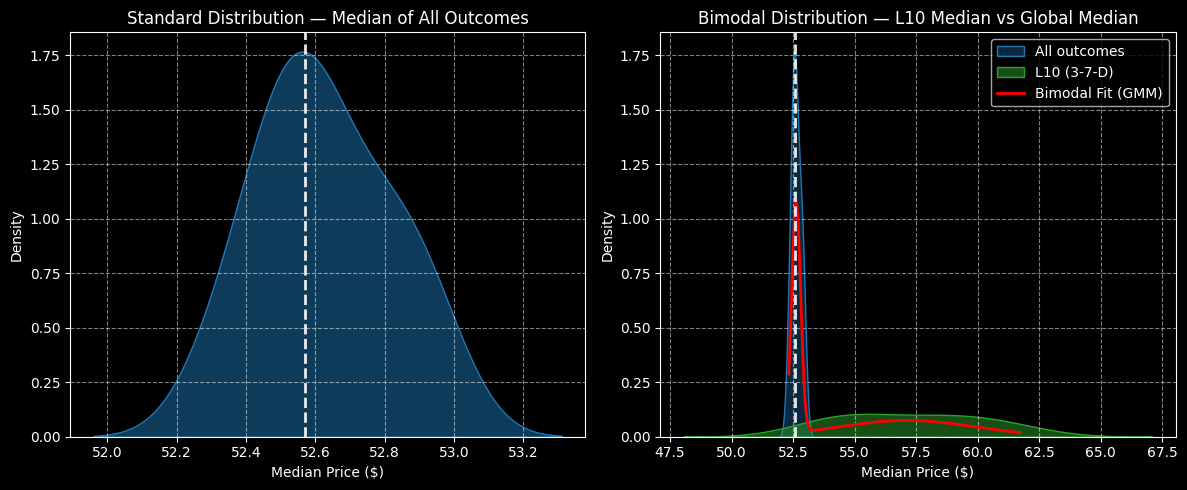With bubble fears in artificial intelligence somewhat mitigated but not fully extinguished, several tech players appear to be on a discount, including AI infrastructure specialist Microchip Technology (MCHP). However, Microchip isn’t one of the frontline entities like Nvidia (NVDA), which means that it hasn’t exactly enjoyed the benefits of the demand surge for deep learning protocols. Subsequently, MCHP stock finds itself down more than 8% on a year-to-date basis.
As if that wasn’t concerning enough, Microchip’s recent performances have raised significant skepticism. For example, in the trailing month, MCHP stock dropped roughly 19%. Over the past half-year period — a time frame when many innovators saw their market value rise — MCHP dipped more than 10%. Pouring salt on open wounds, Barchart’s Technical Opinion indicator pegs the security as a 72% Strong Sell.
At the same time, because of the turmoil, it’s fair to point out that market makers may be incentivizing the bullish side of the trade. Of course, it’s impossible to declare the true intentions of all market participants — that would be absurd. Still, we can look at what the market is offering to gauge expectational realities.
In particular, the 55/60 bull call spread expiring Jan. 16, 2026 represents an intriguing proposition. This trade requires two simultaneous transactions: buy the $55 call and sell the $60 call, for a net debit paid of $195 (the most that can be lost).
Traders are looking for MCHP stock to rise through the second-leg strike ($60) at expiration, which would then trigger the maximum profit of $305, a payout of 156.41% based on present pricing dynamics. Breakeven comes out to $56.95, which is 8.33% above Wednesday’s close.

That would seem rather steep considering the heavy losses that MCHP stock incurred in the past 30 days. Still, I’m fascinated with the proposition because it just might be an example of an informational arbitrage.
Completely Changing the Way We Think About MCHP Stock
It’s my estimation that 99% of financial publication content is worthless, mainly because the traditional methodologies of fundamental and technical analysis are structurally divorced from the mathematical environment that they purport to explain — and worse to predict.
The stock market is stochastic, chaotic, reflexive and heteroskedastic, among many other dynamic characteristics. To explain such an ecosystem through a linear, fixed-drift platform like Excel — or worse yet, to eyeball apparent pricing asymmetries — would be an utterly irrational exercise. To even attempt to decipher the market, the system itself must be capable of reading the market’s complexities.
So many folks in the financial blogosphere use Excel for their modeling but here’s a devastating truth bomb: linear assumptions cannot preserve nonlinear properties. The stock market is nonlinear. Once enough people put two and two together, the finpub industry will suffer a mass extinction event — guaranteed.
Now, to avoid extinction, a methodology must be in the same realm of complexity as the environment it purports to navigate; that’s basically Ashby's Law of Requisite Variety. To better meet this standard, I propose implementing reification and iteration under a Kolmogorov-Markov framework layered with kernel density estimations (KM-KDE).
For reification, we can treat the abstract concept of probability as a physical object. In this manner, probability would have a shape and mass, with the idea that we can focus on trades where the underlying probabilistic support structure is strongest. For instance, if we were to install a giant TV in our room, we would nail the frame onto the studs of the wall. It’s the same idea but for stocks.
Of course, reification of the equities market doesn’t come naturally because a security represents a singular journey across time. That’s where iteration comes into play. By focusing on individual segments of price action, we can run multiple rolling trials in an attempt to uncover patterns.
For me, the biggest pattern is probability density, which I define as the clustering effect of stocks under various conditions across a given time period. In the case of MCHP stock, the security clusters at around $52.55 over the next 10 weeks, thus demonstrating a slight negative bias (since Wednesday’s close was $52.57).

However, under the current 3-7-D behavioral state — where MCHP stock printed three up weeks and seven down weeks, with an overall downward slope — primary clustering would occur at roughly $55.50. Overall, though, the clustering effect under this condition is quite pronounced between $55 and $60.
That’s why I like the 55/60 Jan. 16 bull spread. Statistically, there’s a decent chance that MCHP stock triggers the $60 strike.
Final Thoughts for Microchip
While adopting a probabilistic model can be incredibly insightful, it’s not a foolproof method. Under baseline conditions, MCHP stock risks declining to $51.90 over the next 10 weeks. However, under 3-7-D conditions, the downside risk would be closer to $47.60. What’s more, on a terminal basis on any given day, a downside move could be much more severe, say $40 or below.
Still, it’s my hypothesis that, over many trials, a public security will demonstrate recurring patterns. In addition, these patterns change based on prior pressures, such as accumulative or distributive sessions. Fundamentally, then, the idea is to anticipate probabilistic density before it materializes into actual reality, which is at the heart of the informational arbitrage concept.
On the date of publication, Josh Enomoto did not have (either directly or indirectly) positions in any of the securities mentioned in this article. All information and data in this article is solely for informational purposes. For more information please view the Barchart Disclosure Policy here.
More news from Barchart
- 3 Buy-Rated Dividend Aristocrats Easily Beating Inflation
- ‘Insatiable’ Demand Is Powering This ‘Picks and Shovels’ AI Stock up 245%. Should You Buy It Here?
- Using Probability Density to Extract a Huge Payout from Microchip’s Potential Breakout
- Dear UnitedHealth Stock Fans, Mark Your Calendars for January 30
